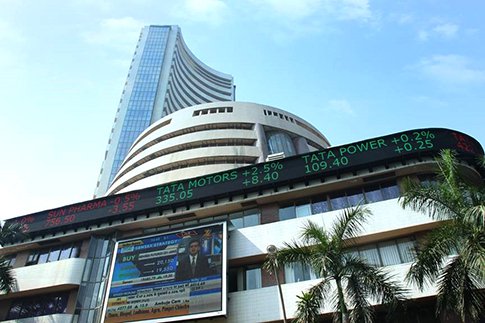Weekly Market Wrap: In the last truncated week, the Nifty ends 2.6 percent lower while the Sensex was down by 2050 points

Amol Athawale,
VP-Technical Research,
Kotak Securities
Mumbai, April 4, 2025: In the last truncated week, the benchmark indices witnessed selling pressure at higher levels, with the Nifty ends 2.6 percent lower while the Sensex was down by 2050 points. Among sectors, the IT index lost the most, shedding over 9 percent; however, despite the weak market sentiment, some buying interest was seen in PSU Bank stocks, resulting in the PSU Bank index gaining over 1 percent.
During the week, the market breached the crucial support zone of 23,500/77400, and after this breakdown, selling pressure intensified. Technically, on the weekly charts, it has formed a long bearish candle, and on the intraday charts, it is holding a lower top formation, which supports further weakness from the current levels.
We believe that after a sharp correction, the market is currently trading near the 20-day and 50-day Simple Moving Averages (SMAs). The short-term outlook suggests that if the market reclaims the 23,000/75800 mark, we could see a pullback rally up to 23,250-23,325/76500-76800. On the flip side, fresh selling is possible only after a break below 22,800/75200. If that happens, it could slip to 22,700/74900. Further downside may continue, potentially dragging the index down to 22,500/74400.
For Bank Nifty, the 200-day SMA, or 51,000, is a critical support zone. As long as it is trading above this level, the bullish setup is likely to continue. On the upside, it could move up to 52,200-52,500. However, if it falls below 51,000, the uptrend would become vulnerable. In that case, traders may prefer to exit their long positions.
Sharing this week’s market round up by Shrikant Chouhan, Head Equity Research, Kotak Securities, adds:
The Nifty-50 Index and Sensex each lost around 2.5% each in the past week as markets resumed the risk-off sentiment. While the mid-cap index lost around 2.4% and small-cap index lost around 1.4% in the past week. Global equity markets witnessed a sharp selloff in the aftermath of the US imposing reciprocal tariffs on most major economies. Indian Indices outperformed, as Indian markets did not react as much as other markets yesterday, following the news flows on tariffs. Sector-wise, most indices ended in red with Capital goods (-5.0%), IT (-8.0%), Metal (-7.2%), Realty (-3.5%), Oil&Gas (-3.9%) and Auto (-5.6%) sectors as major sectoral losers. Other sectors lost between 1 to 3% each. While sectors like Bank Nifty (+0.2%), Telecom (+3%) and FMCG (0.4%) reported gains for the week. Within the Nifty, Tata consumer (+8.4%), IndusInd Bank (+5%) and Trent (+4.6%) gained the most, while Hindalco (-11.4%), HCL Tech (-10.3%) and Tata Motors (-9.2%) lost the most. FPI were net buyers in the past five days, while DIIs were net sellers in the same period. On the economy front, (1) CAD/GDP was at 1.1% in 3QFY25, (2) total central government receipts in 11MFY25 were 13.4% higher yoy and (3) the center’s capex growth was 0.8% in 11MFY25. Meanwhile, the USD-INR appreciated 0.4% over the past week.
In Global, the US government announced ‘discounted’ single-rate country-specific tariffs benchmarked against existing tariff and non-tariff rates. India saw tariff of 26%, lower than most countries. The bigger concern will be risks of retaliatory tariffs, which could impact global trade and investment, US and global growth and inflation. The US dollar weakened sharply, with the euro reaching a six-month high of $1.1037. The yield on the benchmark U.S. 10-year Treasury note dropped 14.6 basis points to 4.049%. In Europe, traders ramped up bets of ECB rate cuts despite the trade war threatening to stoke inflation, on hopes policymakers would take steps to stimulate growth. European Union is preparing further countermeasures against U.S. tariffs if negotiations fail. In Asia, China faces a net tariff of 54% on its exports to the U.S. starting April 9. This could shave 15% of China’s exports and between 2 and 2.5 percentage points of its GDP growth.